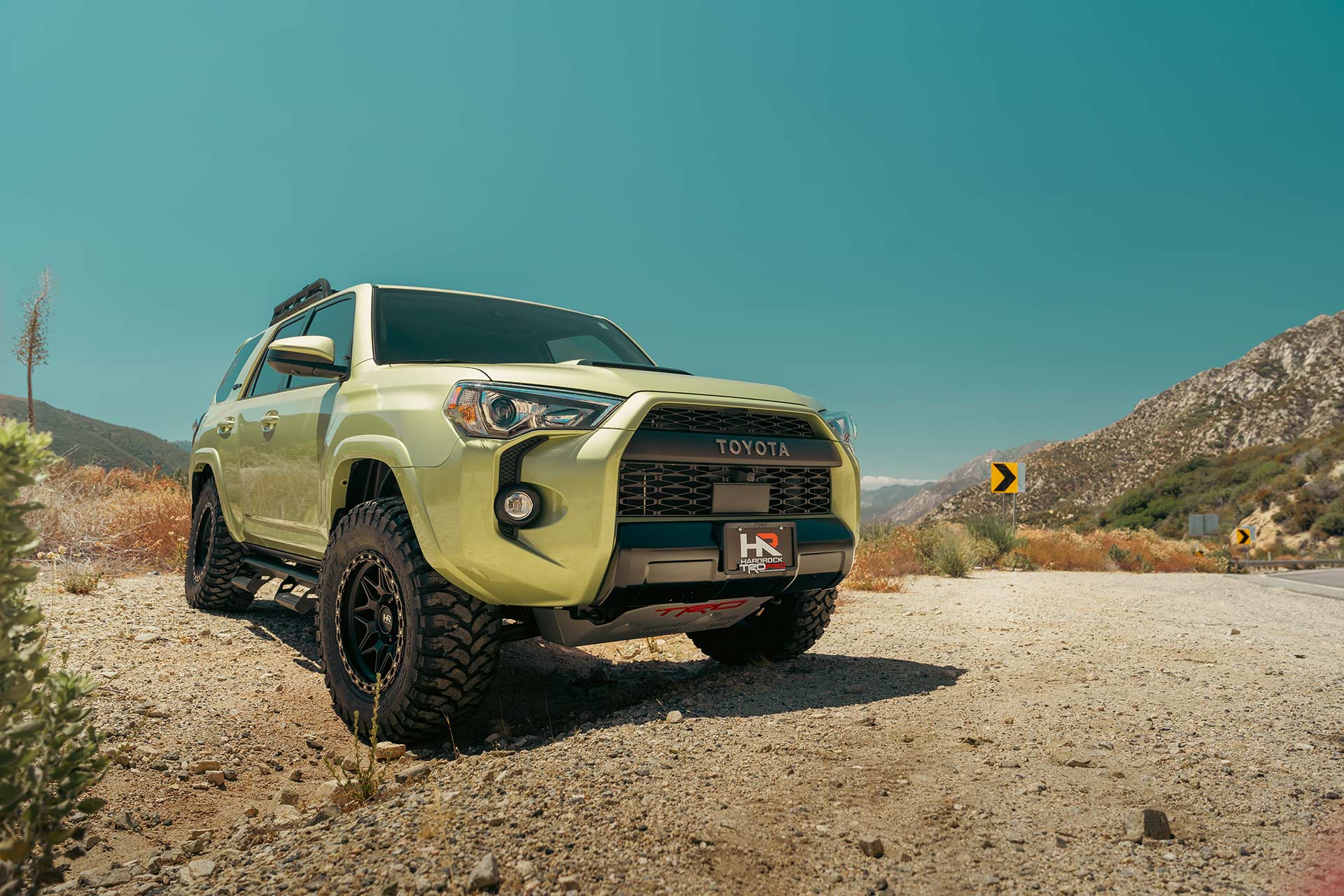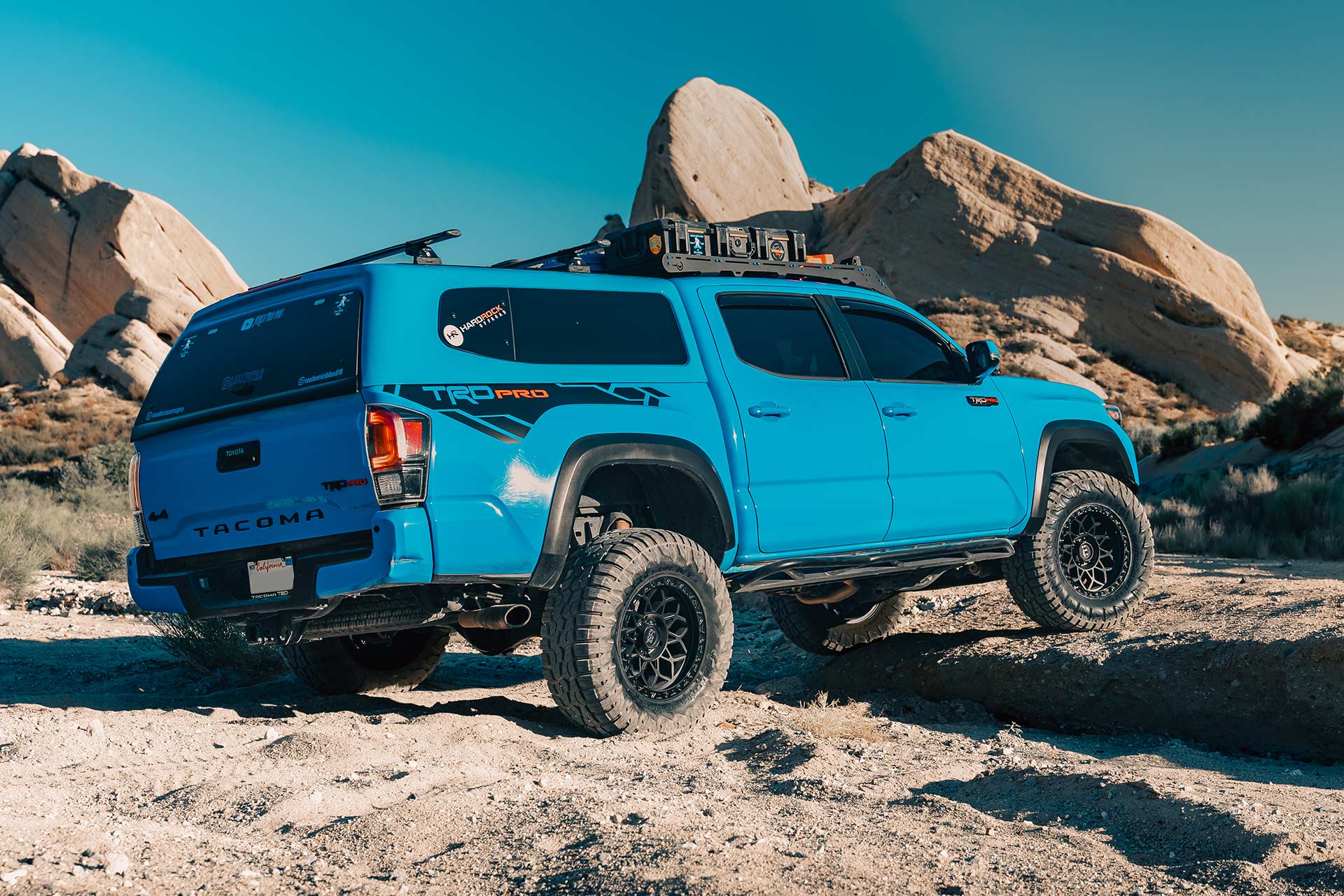Off-Road Wheel Load Capacity Deep Dive
Off-road and overlanding adventures put your rig through extreme conditions and terrains that push every component to its limits. While a lot of off-road enthusiasts tend to focus on tire specifications, suspension upgrades and recovery gear, one critical component often gets overlook: wheel load capacity. Understanding and properly choosing off-road wheels with adequate load ratings isn’t just about performance, it’s about ensuring your safety when you’re adventuring on the road less traveled with a fully loaded rig.
What is Wheel Load Capacity?
Wheel load capacity, sometimes referred to as wheel load rating, represents the maximum weight that a wheel can safely support under normal conditions. This rating is typically expressed in pounds (lbs) in the United States, though some manufacturers may also provide ratings in kilograms (kg). It’s crucial to understand that wheel load ratings are distinct from tire load ratings. Tires have their own load index system, while wheels have a totally separate set of specifications that have to be compatible with your off-road tire choice.
The load rating indicates the maximum load that the wheel is designed to carry and is calculated by taking 50% of the vehicle’s gross axle weight rating (GAWR). This calculation accounts for the fact that each wheel supports half the weight of its respective axle.
How Wheel Load Ratings Are Determined
Wheel load capacities are determined through rigorous engineering analysis and testing that considers multiple factors. The manufacturing method plays a huge role in load capacity. Case wheels typically offer good strength-to-weight ratios, while flow formed and forged wheels generally provide higher load ratings due to their enhance material density and grain structure.
Industry standards like SAE, JWL and VIA establish testing protocols including radial fatigue tests, cornering fatigue tests, and impact tests to verify that wheels can handle specified loads under real-world conditions. These tests simulate the forces wheels experience when carrying vehicle weight, passengers, and cargo.
You can find your wheel’s load rating stamped on the back side of the wheel, either on the spokes or near the bolt pattern. The marking typically appears as “MAX LOAD” followed by a number in pounds. You may need to clean the wheel thoroughly to locate these markings, as they can be covered by dirt or brake dust.

Calculating Wheel Load Ratings
Determining your wheel load requirements starts with understanding your vehicle’s specifications. First, locate your vehicle’s heaviest axle weight rating in your owner’s manual or on the vehicle’s data plate. For most off-road vehicles, this is typically the rear axle.
Here’s the calculation process:
- Find your vehicle’s heaviest axle weight rating (GAWR)
- Divide by two to determine the per-wheel requirement
- Consider that 4×4 vehicles often have uneven weight distribution, with rear axles carrying approximately 60% of the total vehicle weight
Let’s take a 5th gen Toyota 4Runner TRD Pro as an example. The 5G T4R TRD Pro has a rear axle GAWR of 3,439 pounds; if you divide that by two, you get 1,719.5. So that means you need wheel rated for at least 1,719.5 pounds each. However, when you factor in gear, cargo, modifications and passengers, it’s a good idea to exceed this minimum requirement.
Off-Road Wheel Load Capacity Calculator
Off-Road Wheel Load Rating Calculator
Tip: Always round up and consider extra weight from gear, passengers, and modifications.
Why Wheel Load Ratings Matter Off-Road
Off-road environments create unique stresses that go beyond that of typical highway driving conditions. Impacts from rocks, sudden weight transfers during articulation, and shock loads from drops and jumps all place additional demands on your wheels. When you add the weight of recovery gear, camping equipment, water, and fuel for extended overlanding trips, your wheels must handle significantly more than the base vehicle weight.
Exceeding wheel load ratings can result in catastrophic structural failure, including cracks, bending, or complete wheel collapse. Beyond the obvious safety risks and potential for accidents, using improperly rated wheels may void insurance coverage and create legal liability issues.
Choosing the Right Load-Rated Wheels
Matching wheel load capacity to your specific needs requires honest assessment of how you use your vehicle. Lifted vehicles, heavily modified rigs, and those regularly carrying maximum payload require wheels with higher load ratings than stock applications.
Never assume that adequate tire load ratings compensate for insufficient wheel load capacity. Both components must meet or exceed your requirements. At Hardrock Offroad, we have the best off-road wheels. Each each is engineered with generous safety margins, like our H105, that features a 2,500 pound load rating per wheel in a 17×9 configuration.
Common Myths and Mistakes
Many off-road enthusiasts mistakenly believe tire and wheel load ratings are interchangeable or that aesthetic preferences can override safety requirements. Others overlook how modifications like larger tires, armor plating, or roof-mounted gear affect load requirements. These oversights can have serious consequences when your rig is fully loaded on a remote trail.
Hardrock Offroad's Engineering Approach
At Hardrock Offroad, we engineer our wheels specifically for the demanding requirements of off-road and overlanding use. Our testing protocols ensure that every wheel not only meets but exceeds industry standards for load capacity, providing the durability and reliability you need for both daily driving and extreme adventures.

Wrapping Up
Understanding wheel load capacity is fundamental to building a safe, reliable off-road rig. By properly calculating your requirements, selecting appropriately rated wheels, and avoiding common misconceptions, you ensure that your wheels will perform reliably when you need them most.
Ready to upgrade your off-road wheels with confidence? Contact our off-roading experts to discuss your specific requirements and find the perfect load-rated wheels for your adventure rig.
FAQs
Can I use wheels with lower load ratings if my tires are rated higher?
No. Both wheels and tires must meet or exceed your vehicle's load requirements. The weakest component determines your actual capacity.
How do I find my vehicle's axle weight rating?
Check your owner's manual, the vehicle data plate (usually on the driver's door jamb), or contact your vehicle manufacturer for GAWR specifications.
Do lifted vehicles need higher load-rated wheels?
Potentially yes. Lifts can alter weight distribution and add stress to wheels, especially when combined with larger tires and additional modifications.
Where exactly are load ratings marked on wheels?
Load ratings are typically stamped on the back side of the wheel, either on the spokes or near the bolt pattern. Clean the wheel thoroughly to locate these markings.
Is there a safety margin built into wheel load ratings?
Yes, manufacturers include safety factors in their ratings, but this margin should not be relied upon as a substitute for proper sizing.
Can I rotate wheels with different load ratings front to rear?
Only if all wheels meet the requirements of your vehicle's heaviest-loaded axle. Use the most restrictive rating when selecting wheels for rotation.

